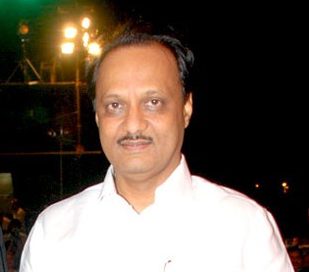Context:
The Election Commission of India (ECI) has officially recognized the faction of the Nationalist Congress Party (NCP) led by Ajit Pawar as the legitimate or “real” NCP. Thus, giving it control over the party’s original name and ‘clock’ symbol.
More on the News
In a recent decision, the ECI settled a leadership dispute within the Nationalist Congress Party (NCP) and recognized Ajit Pawar as the real NCP.
The ECI had relied on the test of majority in the party’s legislative wing to decide the dispute.
- The order of ECI stated that out of the total 81 MPs, MLAs, and MLCs of the NCP, 57 supported Ajit Pawar, 28 supported Sharad Pawar, and 6 members supported both sides.
- Thus, the Ajit Pawar’s faction had a majority even after excluding those 6 members.
The ECI rejected the test of majority in the party’s organizational wing, citing a lack of foundational basis in the internal elections.
- The ECI held that the names of the working committee members were announced by Sharad Pawar.
However, the Sharad Pawar group argued that the test of majority in the Assembly could not be the sole determinative factor as nine MLAs were facing disqualification.
As an interim measure, the ECI has allotted the official name “Nationalist Congress Party – Sharadchandra Pawar” to the faction led by Sharad Pawar for the upcoming Rajya Sabha elections.
Since the Rajya Sabha elections do not require a party symbol, just the party’s name, the Sharad Pawar faction will need to apply afresh to the ECI to either continue this name or for another name and symbol for his faction.
What does the law say?
The Election Symbols (Reservation and Allotment) Order, 1968 empowers the EC to recognise political parties and allot symbols.
Under Paragraph 15 of the Order, it can decide disputes among rival groups or sections of a recognised political party staking claim to its name and symbol. The decision of ECI is binding on all the rival sections or groups involved.
- Paragraph 15 has legal validity, having been upheld by the Supreme Court in the Sadiq Ali and another vs. ECI in 1971.
This applies to disputes in recognised national and state parties. For splits in registered but unrecognised parties, the EC usually advises the warring factions to resolve their differences internally or to approach the court.
The first case to be decided under Para 15 of the 1968 Order was the first split in the Indian National Congress in 1969 into Congress (O) and Congress (J)
Mechanism before 1968
- Before 1968, the EC issued notifications and executive orders under the Conduct of Election Rules, 1961
- A noteworthy case exemplifying this pre-1968 process was the split in the Communist Party of India (CPI) in 1964.
- A breakaway group approached the ECI in December 1964 urging it to be recognised as CPI(Marxist).
- The ECI recognised the faction as CPI(M) after it found that the votes secured by the MPs and MLAs supporting the breakaway group added up to more than 4% in the 3 states.
How does ECI decide who gets the symbol?
Facts considered by ECI:
The ECI employs a comprehensive approach when deciding on the legitimacy of rival claimants within a political party, considering support enjoyed in both the organizational and legislative wings.
To assess organizational backing, the ECI thoroughly examines the party’s Constitution and the list of office-bearers submitted when the party was united.
- It identifies the apex committee(s) in the organisation and finds out how many office-bearers, members or delegates support the rival claimants.
For legislative backing, the ECI evaluates the number of Members of Parliament (MPs) and Members of Legislative Assemblies (MLAs) aligned with each rival claimant.
What ruling does the ECI give after a definite finding?
- In cases where a faction clearly holds the support of a majority within both the organizational and legislative wings, the ECI is likely to grant that faction the entitlement to the name and symbol of the recognised party.
- The ECI may permit the losing faction to register itself as a separate political party. This ensures a clear demarcation between the factions.
What if majority support is unclear?
- When the ECI is unable to establish with certainty which group has the majority support, it might opt to freeze the party’s symbol.
- In such situations, the ECI may allow the groups to register themselves with new party names or add prefixes or suffixes to the party’s existing names.
Can a dispute be decided immediately?
- The ECI generally takes time to gather enough material to decide the dispute.
- However, for immediate electoral purposes, it may freeze the party’s symbol and advise the groups to fight the elections in different names and on temporary symbols.
What happens when rival factions settle their differences in future?
- If reunited in future, the rival parties may approach the ECI again and seek to be recognised as a unified party.
- The EC is empowered to recognise mergers of groups into one entity. It may restore the symbol and name of the original party.

